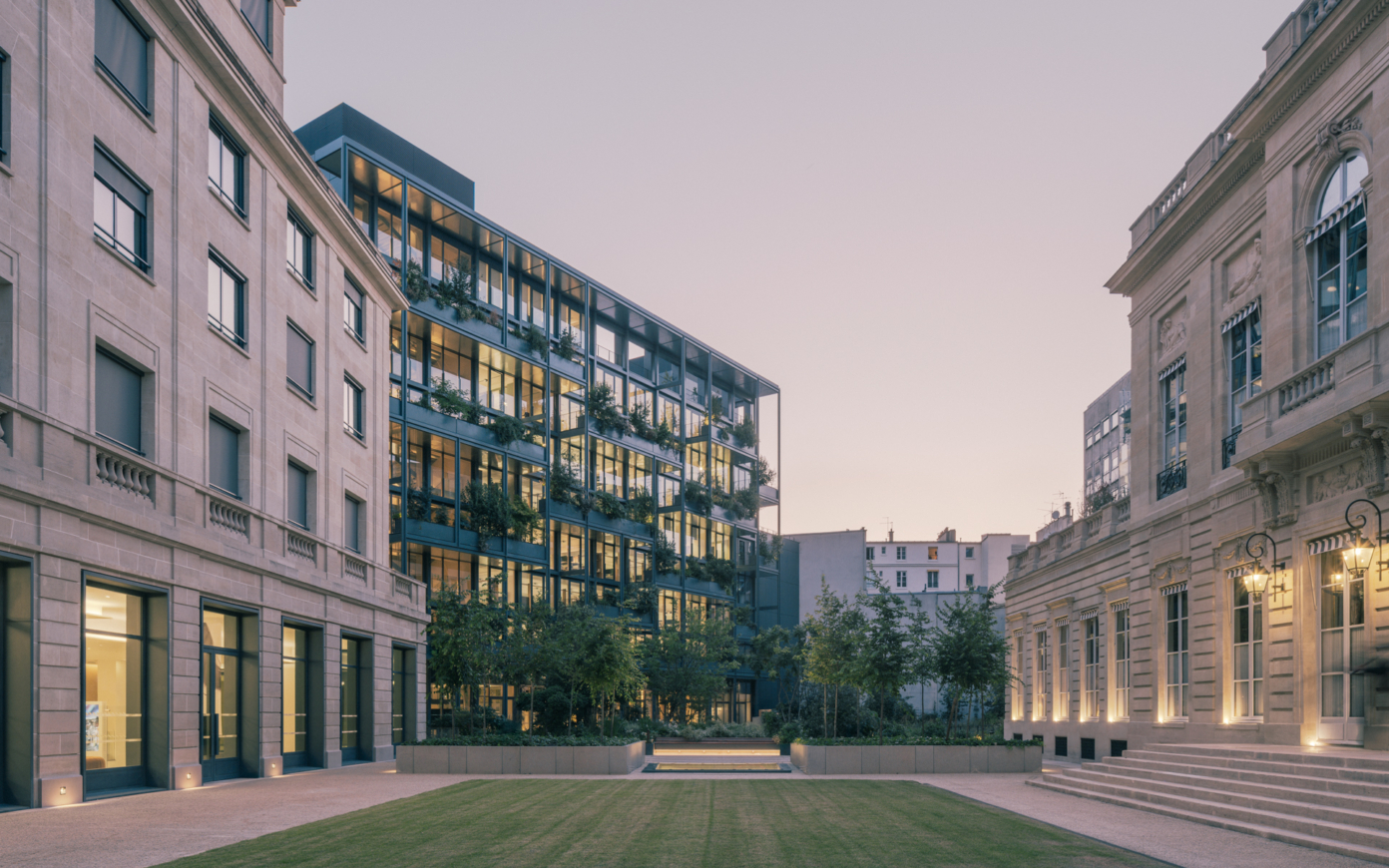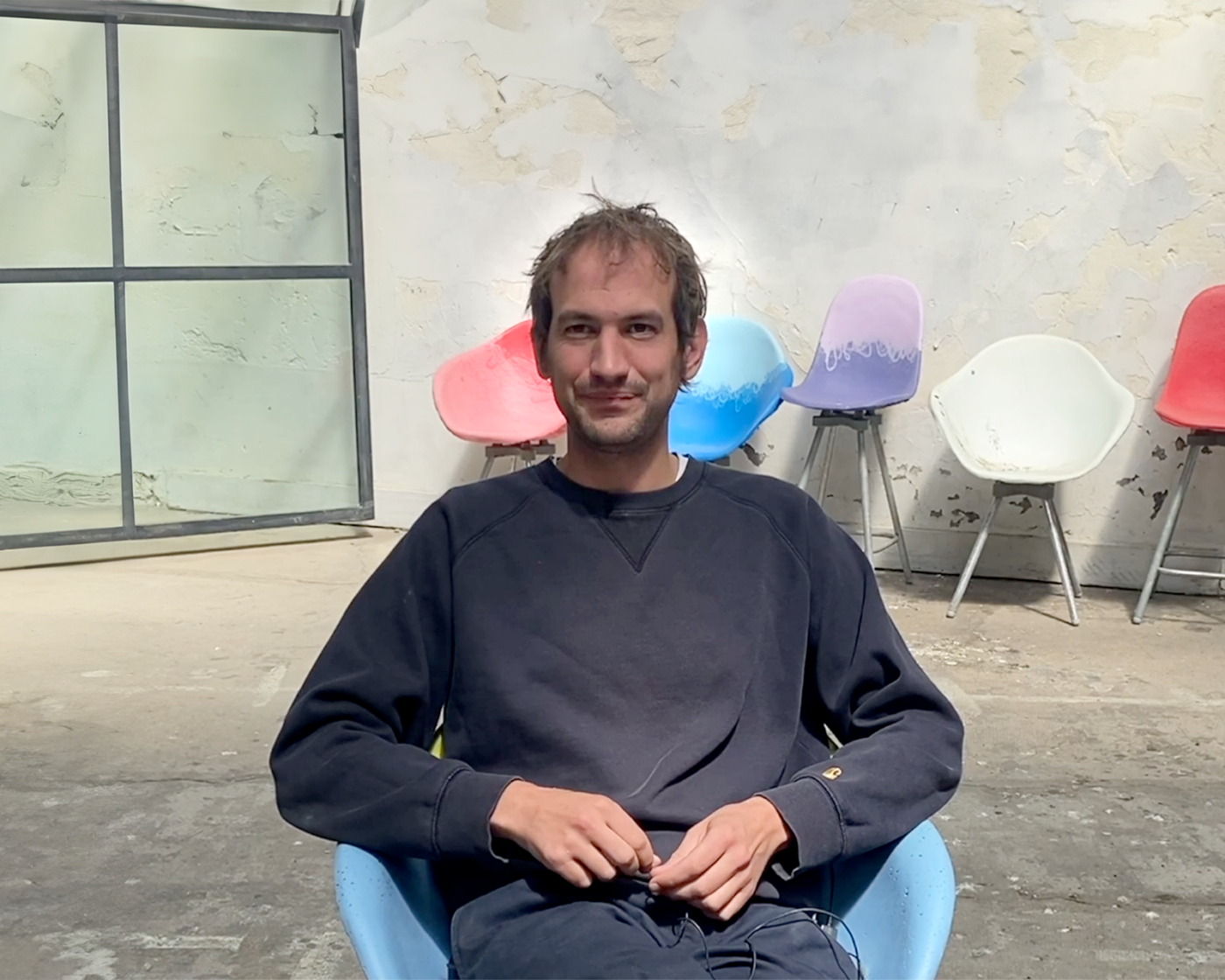Nestled in the heart of the Bièvre Valley, the HEC campus embodies the living archive of modern tensions between nature and knowledge, heritage and forward-thinking. In a world undergoing transition, the school chooses to revisit this exceptional environment and integrate it into a sustainable, inclusive, and ambitious strategy. PCA-STREAM proposes a project that is both contextual and transformative: restoring coherence to a fragmented domain, reactivating landscape and social continuities, and creating a new embodied centrality : the Campus Heart, to give form to the HEC of the 21st century. A place of learning in and with the landscape. A campus aligned with its time.
Architecture


At the crossroads of three nations, the EuroAirport Basel-Mulhouse-Freiburg embarks on a new phase of transformation. In a uniquely binational context, the extension project led by PCA-STREAM is part of a vision for the terminal’s modular evolution, with a threefold ambition: to enhance the passenger experience, strengthen infrastructure performance, and embody a new sustainable airport standard at the European scale.

In the heart of Les Batignolles, PCA-STREAM is restructuring a former parking lot into a mixed-use complex of hotels, restaurants and offices. Based on the atypical and industrial dimension of the existing building, but also on the cultural and artisanal heritage of the neighborhood, the agency has chosen to infuse it with a spirit that emphasizes innovation and creativity. An emblematic central space physically and symbolically articulates the programs by offering cultural and event-based activities.

The historic Berenberg Bank building is about to be reborn. Through a contemporary reinterpretation that enhances its architectural legacy, the project breathes new life into a Hamburg icon, transforming its base into vibrant, open, and multifunctional spaces.

The new Tour Bretagne, a renovation of the emblematic Nantes landmark, offers an opportunity to transform a symbol of the postwar boom, now obsolete, by adapting it to the challenges of our time. The PCA-STREAM – MAGNUM team enhances its elegance and slenderness by converting office spaces into housing, making the project a forerunner of a new era for the city and the metropolis.

In a context of changing cultural practices that question the future of museums, the Centre Pompidou launched a competition for the creation of a new conservation center. This competition was won by the architectural firm PCA-STREAM under “La Fabrique de l'Art” (The Art Factory) project submission. Housing the collections of the Centre Pompidou and the Picasso Museum, it will offer a comprehensive collection and conservation facility leveraging an innovative approach whereby, under one building, there will be both a facility for cutting-edge research/conservation and a public engagement space. The project, which is set within a delightful park, will become a new central location for residents of the Île-de-France region.

La Source Vive is a new concert hall dedicated to chamber music located in Évian. The result of a collaboration between architects Patrick Bouchain and Philippe Chiambaretta. Its conch-like form is the outcome of sensory experimentation and scientific analysis aimed at achieving exceptional acoustics while blending seamlessly into its scenic surroundings. The project is housed by the Évian Resort and embodies Aline Foriel-Destezet’s commitment to promoting music. Born of her desire to support the creation of an architectural complex featuring a unique concert hall in service of a major music project, La Source Vive will be located at the Mélèzes site, in the close vicinity of La Grange au Lac, another iconic music venue designed thirty years ago by Patrick Bouchain. Together, they will form an exceptional architectural complex dedicated to music—two complementary facilities within the same institution working together to provide a complete, open, and supportive musical experience.

PCA-STREAM is responding to AXA’s ambition to embody its commitment to a sustainable transition through the complete transformation of its global headquarters on Avenue Matignon. The new complex fosters innovative and responsible uses around an exceptional 21st-century garden.

PCA-STREAM has won the competition for the extension of the Bobigny courthouse by designing a building with a balanced monumentality, reaffirming without excessive theatricality the sacredness of justice. The new courthouse will offer a functional and exemplary building, embodying the idea of a justice of care.

PCA-STREAM was tasked by Groupama to design an innovative tower that will renew the image of La Défense. Revisiting the model of the traditional tower, The Link is emblematic of the transformation of working practices and a new relation to the city. Its morphology in two wings connected to one another with platforms called “links” allows the tower to provide spaces that foster interactions and collective intelligence, and gives an unprecedented place to nature in a high-rise building.

The restructuring of the 175 boulevard Haussmann is the opportunity to become part of a resilient and innovative city, capable of renewing itself. PCA-STREAM is bringing together two separate buildings to create a coherent office complex, focused on well-being and collaborative working. A contemporary and emblematic elevation, in glass scales, practically and symbolically links the buildings and eras. The complex has been chosen as the headquarters of the Lazard bank.

Covivio, Hines France, and PCA-STREAM have come together to create the Stream Building, a manifesto building located at the heart of the new Clichy-Batignolles district that integrates almost fifteen years of research by Stream Lab into innovations addressing the key challenges facing the cities of tomorrow. Circular by design, the Stream Building is a relational and productive hub that will energize this new urban center within the Greater Paris area by concentrating all the activities associated with a vibrant urban life.

In collaboration with the Taller de Arquitectura, PCA-STREAM is rehabilitating Marché Saint-Honoré, Ricardo Bofill’s contemporary masterpiece, in order to adapt it to today’s new uses and environmental challenges, while staying true to its original avant-garde design.

At emlyon’s upcoming Gerland campus, which welcomed its inaugural students in September 2024, we’ve arranged the buildings around a spacious interior street and a spectacular central hub—Cœur Battant, the “beating heart” of the campus—where daily activities and key school events will converge. Every element is designed to foster interaction, serendipity, and collective intelligence. The campus opens itself up to the city, as well as to businesses and events. It is fully aligned with the environmental dynamics of the Gerland District as well, with its extensive garden and commonsense approach to sustainability, exemplified by its uncomplicated and efficient facades adorned with terraces and inviting outdoor walkways.

The new Versailles Tourist Office is intended to improve the reception of the millions of tourists to the château, while allowing them to discover the richness and variety of the city's cultural activities. In dialogue with a contemporary grove by landscape designer Nicolas Gilsoul, PCA-STREAM reinterprets the figure of the pavilion to offer a sober and minimal building, combining modernity and classicism, as a synthesis of what Versailles can offer the world.

Located near the Saint-Lazare train station, these new-generation offices in a former military barracks combine the best of two architectural heritages. They offer a comfortable and prestigious workplace, turned towards nature and the well-being of its users, French law firm Gide-Loyrette-Nouel. The building's heritage is magnified and remodeled, enhancing its attractiveness and competitiveness, while helping to write a new page in the history of Paris's ever-changing urban fabric.

With Ivry Confluences, located in a changing urban landscape featuring brownfield sites and eco-districts, PCA-STREAM is designing a symbol of the revitalization of the south end of Ivry-sur-Seine. In dialogue with the local industrial heritage, the studio reinterprets the morphology of railway halls to develop a new complex with exacting environmental standards. An exemplar of next-generation offices, Ivry Confluences takes an active part in adding to the vibrancy and diversity of the district thanks to its active base and an extensive garden that opens onto the city.

PCA-STREAM’s restructuring of 52 Champs-Élysées, the former Virgin Megastore, contributes to renewing the image and attractiveness of the Champs-Élysées. The imposing Streamline Modern Art Deco building gains new coherence thanks to a magnification of its architectural style and a clarification of its program. It will host a Galeries Lafayette department store, high-end offices, and an exceptional garden restaurant overlooking Paris.

In the heart of the Golden Triangle district, at 32–34 Rue Marbeuf, PCA-STREAM is reinventing the iconic Citroën dealership from the 1930s for Gecina, restored to its former glory with rejuvenated original architecture, innovative workspaces, and a full-fledged hanging garden on terraces that open out onto Paris.

ShAKe offers the Euralille district an atypical and convivial silhouette, with a spiraling planted promenade topped by a belvedere. PCA-STREAM is rethinking the office building, opening it up to the city and its residents, to adapt to the changing face of an increasingly open-plan working world. The form of the building-promenade is an invitation to live and share.

At the heart of the Silicon Sentier, in the 10th arrondissement of Paris, PCA-STREAM is restructuring an imposing postal building from the 1950s following an ambitious approach both in terms of heritage and the environment. Adaptive reuse has enabled the building to now offer flexible, comfortable, and innovative spaces, complemented by high-end services, as well as exceptional outdoor spaces.

In the heart of the revitalized Porte Maillot district, PCA-STREAM revisits the Parisian modernist heritage and extends the city-nature dialogue. The agency’s intervention respects and enhances the architectural qualities of the original structure. On the north side, the façade grid is reinterpreted in a contemporary style inspired by its original rigorous layout. Designed as a balcony overlooking the Bois de Boulogne, it highlights the exceptional linear nature of the building with unobstructed views of the greater Parisian panorama.The new headquarters of Murex, the world leader in software for the financial markets, was designed above all to maximize interaction and collective intelligence, an essential function of a head office that has been reinforced by the health crisis. Spaces are streamlined and legible, and fluid circulation is ensured by a core of elevators and Chambord staircases on the first day. Employees meet and exchange ideas in a place conducive to informal dialogue.

#cloud.paris stems from PCA-STREAM’s research and Société Foncière Lyonnaise’s ambitions. In the time and age of the intangible economy, its inner city location and its versatility coincides with the aspirations of the creative classes and the employees of high value-added industries, which are turning away from the single-use business centers of the periphery. Following heavy restructuring, this urban campus was designed as a relational ecosystem where the collective experience stimulates innovation and productivity.

The Canopy project in Pré-Saint-Gervais is a rehabilitation of a brownfield site in the inner suburbs of Paris that offers next-generation work spaces. This project was first conceived by PCA-STREAM in 2005 but took more than ten years to come into being. The original proposal, which was to transform a former industrial hall in a open plan of atypical and innovative offices for creative businesses, has weathered the subprime mortgage crisis is finally materializing now that a new vision of the workspace has gained in acceptance.
Explorer Tous les professions
 stream voices
stream voices
Eager to share more generously the results of its collaborations and research, PCA-STREAM publishes STREAM VOICES, its online magazine!









